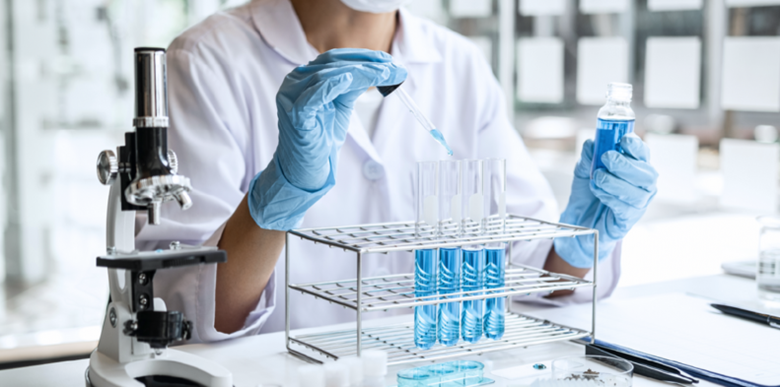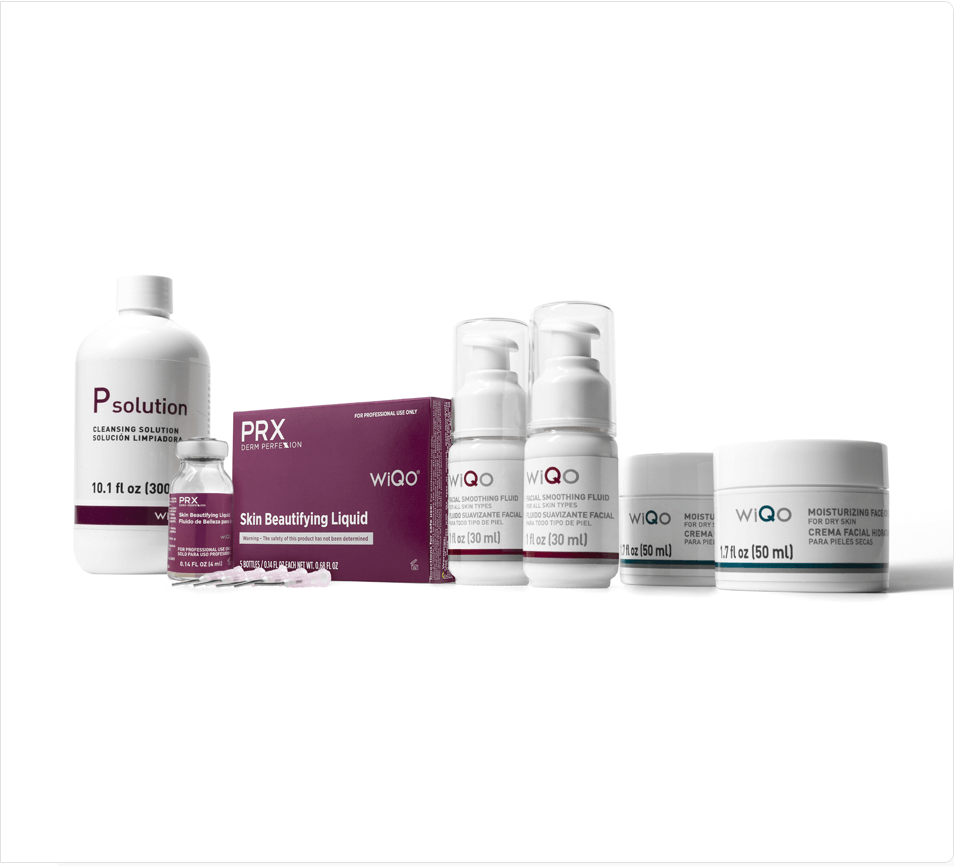EXOSOMES: HOPE OR HYPE?

Recently, companies have come on the market with cosmetic skincare products that claim to contain exosomes. But, buyer beware! Exosomes are notoriously finicky biological signals that are difficult to isolate, use therapeutically, and are actually considered by the FDA to be biological drug products. You are likely not getting what you think when you buy one of these products!
What are exosomes, anyway?
Simply, exosomes are one way that cells can send signals to other cells. They are small, membrane-bound vesicles secreted from all types of cells in the body. What does that really mean? Well, they are discreet packages that can contain cellular proteins, growth factors, RNA, and microRNAs (which are important for gene expression). They are wrapped in the same molecules that our cells are surrounded by, so they effectively fuse with neighboring cells and release their cargo. As you can imagine, their size is extremely small! An exosome is about 100 nm (about 1000 times smaller than the width of a human hair and about 100 times smaller than a red blood cell).
Why are exosomes important?
Importantly, exosomes from mesenchymal stem cells (MSCs are adult human stem cells) activate signaling pathways involved in wound healing, encourage angiogenesis, and mediate immune responses. In addition, they induce the expression of several essential growth factors in cells. However, the science isn’t totally conclusive, and the normal physiological purpose of exosome generation is somewhat enigmatic. While studies indicate that exosomes play a role in regulating cell-to-cell communication, others speculate that they are simply to remove excess or unnecessary constituents from the cell to maintain normal homeostasis.
Are exosomes the only way cells deliver signals to other cells?
No! In fact, most cells send signals to other cells by secreting growth factors and other signaling proteins. Cells have a number of ways of “talking” to the cells around them. The way that most cells achieve this goal is by secreting proteins directly into the extracellular space around them. Then, those proteins travel to other cells, bind to specific receptors on their surface, and activate important signaling pathways within. This is the main way that MSCs talk to other surrounding cells: by secreting growth factors and proteins directly into the extracellular space. These factors can be short-range or long-range, but they usually aren’t packaged in exosomes.
What are the challenges of using exosomes in skincare products?
Remember in the early days of the COVID-19 pandemic, when one of the issues with vaccination revolved around temperature (the vaccines need to be stored at extremely low temperatures around -112°F)? Well, that is due to the fact that the vaccine (made of mRNA) and the surrounding lipid package (basically an artificial exosome) are extremely sensitive to temperature. So, unless your skincare product is stored at -112°F [1], you’re likely not preserving the exosomes contained within.
Additionally, think about how small those exosomes are! To actually isolate them, you need to centrifuge the media that stem cells are grown in at about 37,000 rpm for hours [2]. That’s about 15 times faster than your car engine is spinning its crankshaft. And, it’s 120,000 times the force of gravity! The ability to perform this isolation (and validation that a product actually contains exosomes) on a commercial scale is limited to very few laboratories in the entire world.
While it is unlikely that most skincare products on the market claiming to be isolated exosomes actually contain exosomes, any cosmetic product that contains exosomes is actually illegal! Yes, that’s right. The Food and Drug Administration (FDA) actually classifies them as regenerative medicine products. And guess what? The FDA has approved no exosome products in the US so far [3].
What is the smart alternative to all this exosome hype?
The reality of the situation is that MSCs secrete numerous proteins into the extracellular space that are extracellular matrix proteins (like collagen, fibronectin, elastin, and laminin), anti-inflammatory proteins (like IL-10 and IL-1RA), growth factors (like FGF, VEGF, and EGF), metalloproteinases (that break down scar tissue like MMP1-3) and proteins with anti-oxidant properties (like SOD2). Do they also secrete exosomes? It’s likely, but the reality is that they aren’t the major source of the MSCs’ regenerative and healing properties [4].
FACTORFIVE carefully grows MSCs, collects media rich in these proteins from the cells, and preserves it in a special proprietary process. Because we are vertically integrated, our chemists then take the growth factor-rich media and put it into all of our products. It’s usually the first or second ingredient, meaning that we don’t just put a little media into the products–we put enough so you see results. Then, the manufacturing team bottles and ships them to you. In essence, you can be assured you’re getting the best quality rejuvenating skincare products that are based on solid science, and not the latest marketing hype!
In conclusion, exosomes are an exciting new avenue of drug delivery, likely have extensive therapeutic benefit, and will be useful in treating and curing multiple human diseases. However, caveat emptor! They very likely are not present in your over-the-counter skin products, due to the fact that they are regulated and need to be produced and tested in specialized pharmaceutical production facilities.
Sources:
[1] Cheng, Y., Zeng, Q., Han, Q. et al. Effect of pH, temperature and freezing-thawing on quantity changes and cellular uptake of exosomes. Protein Cell 10, 295–299 (2019). https://doi.org/10.1007/s13238-018-0529-4
[2] Li P, Kaslan M, Lee SH, Yao J, Gao Z. Progress in Exosome Isolation Techniques. Theranostics. 2017 Jan 26;7(3):789-804. doi: 10.7150/thno.18133. PMID: 28255367; PMCID: PMC5327650.
[3] https://www.fda.gov/vaccines-blood-biologics/consumers-biologics/important-patient-and-consumer-information-about-regenerative-medicine-therapies
[4] Bura A, Planat-Benard V, Bourin P, Silvestre JS, Gross F, Grolleau JL, Saint-Lebese B, Peyrafitte JA, Fleury S, Gadelorge M, Taurand M, Dupuis-Coronas S, Leobon B, Casteilla L. Phase I trial: the use of autologous cultured adipose-derived stroma/stem cells to treat patients with non-revascularizable critical limb ischemia. Cytotherapy. 2014 Feb;16(2):245-57. doi: 10.1016/j.jcyt.2013.11.011. PMID: 24438903.



